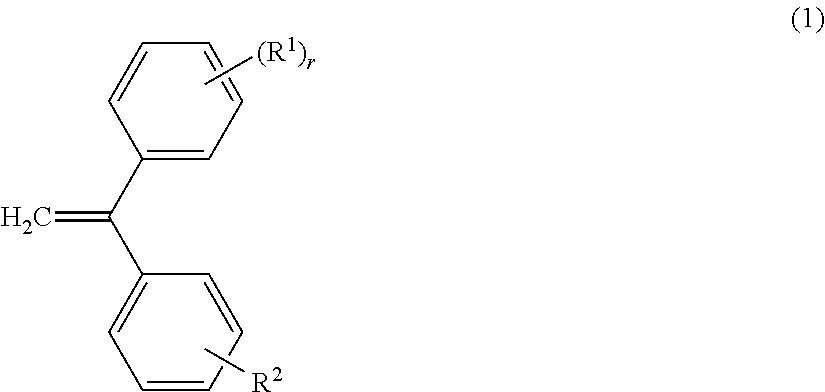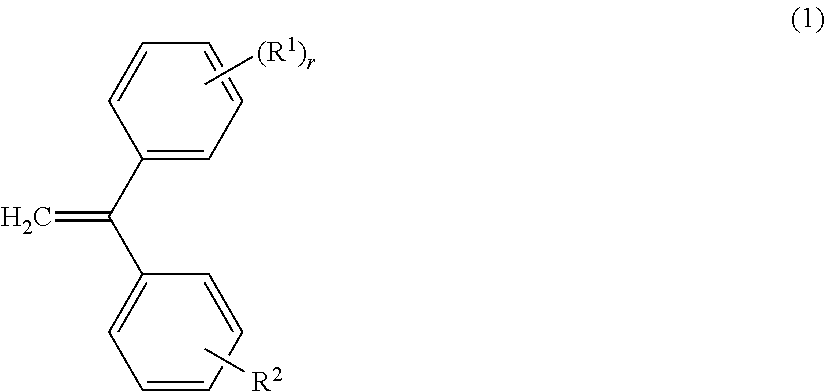Conjugated diene polymer, conjugated diene polymer composition, and method for producing conjugated diene polymer
- Summary
- Abstract
- Description
- Claims
- Application Information
AI Technical Summary
Benefits of technology
Problems solved by technology
Method used
Image
Examples
example 1
A 20 liter capacity stainless polymerization reactor equipped with a stirrer was washed, dried, and flushed with dry nitrogen. Subsequently, the polymerization reactor was charged with 10.2 kg of industrial hexane (density 680 kg / m3), 608 g of 1,3-butadiene, 192 g of styrene, 6.1 mL of tetrahydrofuran, and 4.12 mL of ethylene glycol diethyl ether. Subsequently, 15.21 mmol of n-butyllithium was charged into the polymerization reactor as an n-hexane solution, and a polymerization reaction was started.
Copolymerization of 1,3-butadiene and styrene was carried out at a stirring speed of 130 rpm and a polymerization reactor internal temperature of 65° C. for 45 minutes while continuously supplying the monomers to the polymerization reactor. The amount of 1,3-butadiene supplied was 304 g, and the amount of styrene supplied was 96 g.
When 60 minutes had passed after the addition of n-butyllithium, the polymerization reactor was charged with a cyclohexane solution of 12.80 mmol (2.86 g) of 1-...
PUM
| Property | Measurement | Unit |
|---|---|---|
| Percent by mass | aaaaa | aaaaa |
| Percent by mole | aaaaa | aaaaa |
| Percent by mole | aaaaa | aaaaa |
Abstract
Description
Claims
Application Information
 Login to View More
Login to View More - R&D
- Intellectual Property
- Life Sciences
- Materials
- Tech Scout
- Unparalleled Data Quality
- Higher Quality Content
- 60% Fewer Hallucinations
Browse by: Latest US Patents, China's latest patents, Technical Efficacy Thesaurus, Application Domain, Technology Topic, Popular Technical Reports.
© 2025 PatSnap. All rights reserved.Legal|Privacy policy|Modern Slavery Act Transparency Statement|Sitemap|About US| Contact US: help@patsnap.com



